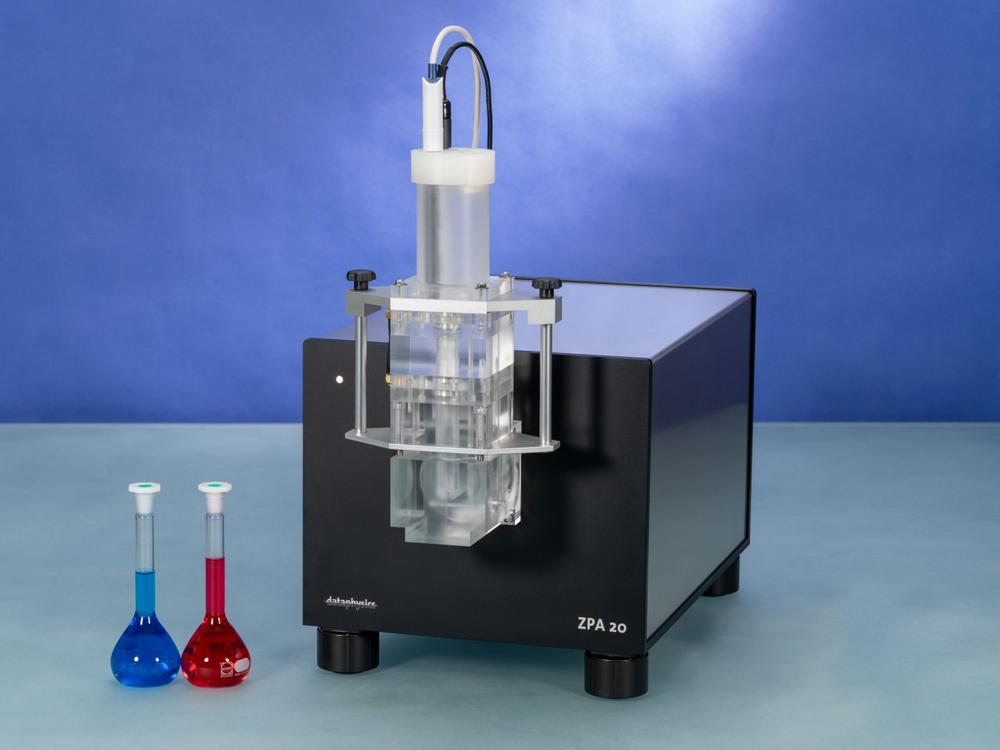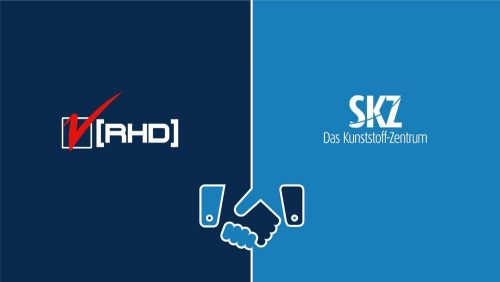
Zeta Potential Analyzer validated by Leibniz Institute for Polymer Research Dresden
The zeta potential is a measurable quantity that characterises the charge situation at a solid surface in solution. It is measured at the boundary between the ion layer firmly adsorbed on the solid surface and the solution. Dr. Astrid Drechsler, a scientist at the Leibniz Institute for Polymer Research Dresden e.V. (IPF), and an expert in the characterisation of polymer interfaces, explains why the zeta potential is an important parameter, “When a solid surface is submerged in an aqueous solution, it becomes electrically charged due to dissociable surface groups and adsorption of ions and molecules. The zeta potential provides information about these chemical functionalities and charge formation processes. Thus, it can be used to, for example, predict interactions such as adhesion between different surfaces.” Zeta potential measurements are important in a broad range of applications, such as the investigation of fuel cell membranes, fouling processes of filter membranes, bacterial growth on food packaging, and washing of textiles.
Depending on the size and shape of the samples, the zeta potential can be determined using different measurement techniques. For small particles in the nanometre to low micrometre range, electrophoretic methods are often used. For larger samples in the millimetre and centimetre range, the analysis of the streaming potential or the streaming current has proven to be advantageous. The new ZPA 20 zeta potential analyzer from DataPhysics Instruments uses a patented method based on the streaming potential and streaming current analysis. It is therefore particularly suitable for the investigation of samples in the macroscopic range. The device can be equipped with the MC-ZPA/S, a measuring cell for solid materials such as plates, membranes, or foils, and the MC-ZPA/PF, a measuring cell for fibres, powders and granulates.
Customers who are unsure whether the ZPA 20 zeta potential analyzer is the right device for them can not only rely on the in-depth knowledge of the DataPhysics Instruments’ sales team, but also request trial measurements with their samples. Dr. Sebastian Schaubach, Chief Innovation Officer at DataPhysics Instruments, says, “Our laboratory offers contract measurements for all possible applications, with the ZPA 20 as well as all other devices of our portfolio.”
Leibniz Institute for Polymer Research Validates Results
The ZPA 20 zeta potential analyzer had to meet the highest quality standards from the beginning. Thus, the manufacturer DataPhysics Instruments cooperated with a partner of worldwide renown: the Leibniz Institute for Polymer Research Dresden e.V. (IPF). As an IPF scientist, Dr. Astrid Drechsler has been dealing with the physical chemistry of polymer surfaces, which includes zeta potential measurements.
Since 2017, Drechsler and her team have accompanied the development of the ZPA 20 zeta potential analyzer through several project phases. “In the first phase, we validated data measured with the prototype of the zeta potential analyzer,” says Drechsler. A second project phase enabled further improvements of not only the device but also its measuring cells. “The focus was simplifying the handling of the measuring cells and achieving reproducible sample preparation,” explains Anja Caspari, a chemical laboratory technician at the IPF.
Patented Measuring Method Enables Accurate and Rapid Results
The streaming potential analysis for investigating the zeta potential works as follows: An electrolyte solution is pumped through a measuring cell containing the sample material. Specifically, it is pumped between two flat solid samples or through the gaps in fibre or powder packages. The flow of the electrolyte solution separates ions near the surface and carries them with it. This results in a difference in potential between the electrodes situated at both sides of the sample. Electrodes measure these differences, depending on the experiment, as streaming current, or streaming potential. These values, together with the pressure difference in front of and behind the measuring cell, allow the calculation of the zeta potential.
The ZPA 20 zeta potential analyzer uses a patented measuring method to achieve rapid results with high accuracy. Schaubach explains, “The ZPA 20 zeta potential analyzer is the only measuring device on the market today measuring the streaming potential or streaming current in a bidirectional and oscillating fashion.” The electrolyte solution is pumped over or through the sample not only in one direction but alternately in opposite directions. Additionally, the flow rate of the electrolyte liquid changes within every repeated cycle, resulting in pressure changes. The device records up to 100 pressure values together with the corresponding streaming potential or streaming current in one second. Thus, results with excellent statistical quality are generated within a short time frame. The software can easily process large amounts of data and evaluate them automatically.
The patented measuring method of the ZPA 20 Zeta Potential Analyzer does not only save time during the measurements, but also helps to reduce common sources of error. The oscillating measurement creates both positive and negative pressure differences, and consequently positive and negative values of the streaming potential or current. This may prevent the polarisation of the device electrodes.
Additionally, the bidirectional flow can reveal asymmetries of the sample surface, such as, for example, inhomogeneous fibre or powder packages as well as insufficiently fixed flat samples. Therefore, with the oscillating, bidirectional flow of the electrolyte, error sources can be identified and measurement errors prevented.
Modular And Open Design Approach
During the development of the ZPA 20 zeta potential analyzer, special care was taken to ensure that all surfaces were easy to clean to avoid cross-contamination. This aspect is especially important for obtaining unbiased time- and pH-dependent zeta potential measurements.
Additionally, the ZPA 20 zeta potential analyzer can be expanded with optional modules. For example, with the LDU 25 liquid dosing system, the electrolyte composition can be changed automatically. This allows to determine the isoelectric point or adsorption of surfactants quickly and accurately.
“The cooperation with the IPF helped us to tailor the ZPA 20 zeta potential analyzer to the needs of our customers right from the start and to design it with the highest scientific standards in mind,” says Schaubach, “We are especially proud that the patented measurement method renders zeta potential measurements quicker, easier and more reliable than ever before.”
DataPhysics Instruments GmbH ist ein deutsches Unternehmen aus der Region Stuttgart, das seit 25 Jahren Messtechnik für die Untersuchung von Grenz- und Oberflächen herstellt. Mit den Geräten von DataPhysics Instruments lassen sich wichtige physikalische und chemische Kenngrößen, wie etwa Oberflächenspannung und -energie, Adhäsionskraft, statische und dynamische Kontaktwinkel, Rauheitsprofile, Zeta-Potenzial und Destabilisierungsmechanismen bestimmen. Kurz gesagt kommen die Geräte überall da zum Einsatz, wo eine Flüssigkeit auf eine andere Flüssigkeit oder auf einen Feststoff trifft. Zum Produktportfolio gehören Kontaktwinkelmessgeräte, Tensiometer, Spinning-Drop-Tensiometer, Stabilitäts-Analysegeräte, Oberflächen-Profilometer und Zeta-Potenzial-Analysesysteme. Zusätzlich bietet das Unternehmen Auftragsmessungen in allen genannten Bereichen an.
DataPhysics Instruments GmbH
Raiffeisenstrasse 34
70794 Filderstadt
Telefon: +49 (711) 770556-0
Telefax: +49 (711) 770556-99
https://www.dataphysics-instruments.com
Marketing Managerin
Telefon: 071177055659
E-Mail: s.doettling@dataphysics-instruments.com
![]()



